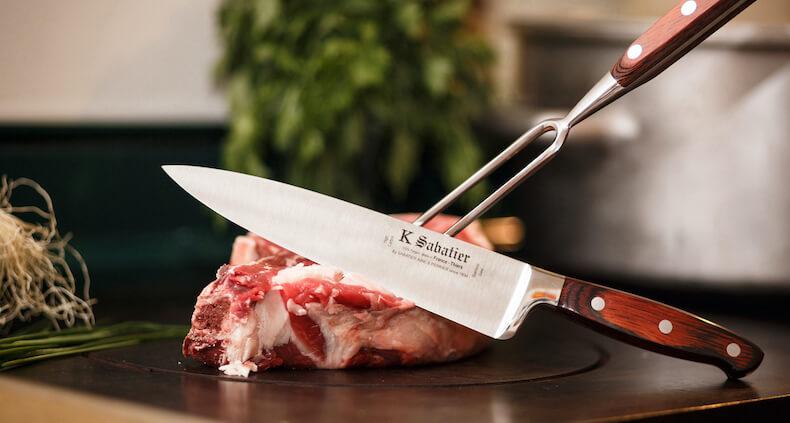Have you ever wondered how to cut a coconut with a knife? It’s a remarkable skill that every kitchen enthusiast can master with ease. Today, we are going to explore the delightful and big world of coconuts and their tremendous benefits. Cutting a coconut with a knife is not only about getting to the delicious flesh inside but also about enhancing your kitchen techniques. You will be delighted to learn how simple and satisfying it can be.
In this informative guide, we will delve into the art of cutting a coconut with a knife, offering approved steps and approved tips that ensure safety and efficiency. By the end of this article, you’ll be slicing through coconuts like a pro and delighting in the sweet rewards within.

Understanding the Coconut: Structure and Benefits
Before we dive into the process of cutting a coconut, it’s crucial to understand the coconut itself. Coconuts are incredible fruits with several layers: the outer husk, the hard shell, and the soft inner flesh. Each part has its unique uses and benefits.
The coconut’s husk is usually removed before reaching the market, and what you find is a hard shell encasing the nutritious water and flesh. This shell requires a bit of technique to crack open, but with a few approved strategies, it becomes a simple task.
For more on coconut benefits, you can visit BBC Bitesize.
Tools You’ll Need: Choosing the Right Knife and Equipment
For cutting a coconut effectively, the right tools are essential. A sturdy chef’s knife or a cleaver is highly recommended. These are ideal for cracking the shell and slicing the coconut meat. Ensure that your knife is sharp as dull blades can slip and cause accidents.
In addition to the knife, you’ll need a stable surface like a cutting board, a towel for stability, and possibly a spoon for scooping out the flesh. Having the right tools will make cutting the coconut a safe and delightful experience.
Step-by-Step Guide: Cutting a Coconut with a Knife
Step 1: Preparing Your Workspace
Start by laying out your tools and ensuring your workspace is clean and dry. Place a towel under your cutting board to prevent slipping.
Step 2: Puncturing the Coconut
Find the coconut’s three eyes at the top. Pierce one of these soft spots using your knife tip or a screwdriver to drain the coconut water. Be sure to collect the water in a cup or bowl for a refreshing drink later.
Step 3: Cracking Open the Shell
Once drained, hold the coconut securely in one hand. Using the blunt side of your knife, tap firmly around the coconut shell’s equator. Rotate the coconut as you tap until you feel and see cracks forming.
Step 4: Separating the Halves
After sufficient tapping, you should be able to separate the halves by prying them open with your hands or using the knife as leverage.
Step 5: Scooping the Flesh
With the coconut open, use a spoon to scoop out the white flesh. For stubborn flesh that sticks to the shell, a paring knife can help cut away any connected fibers.
Safety Precautions: Staying Safe While Cutting
When learning how to cut a coconut with a knife, safety is paramount. Always ensure your knife is sharp and handle it with care. Make sure your cutting board is stable to prevent the coconut from slipping and causing injury. Wearing cut-resistant gloves can also be a wise precaution.
Tremendous Culinary Uses of Coconut
Coconuts are versatile fruits that can be used in numerous culinary delights. The meat can be shredded or chopped for baking or cooking, and the water serves as a delightful beverage. Coconut milk and oil also have tremendous uses in the kitchen.
Exploring Further: Additional Resources
For more tips on kitchen techniques, check out our articles on cooking frozen burrito and cooking chicken legs in an air fryer. These guides will help you experiment with new recipes and enhance your culinary knowledge.
Common Mistakes to Avoid
While cutting a coconut, avoid using excessive force which can lead to accidents. Do not use the sharp edge of the knife to crack the coconut, as this can damage the blade and increase the risk of injury.
The Environmental Impact of Coconuts
Coconuts are not only used in the kitchen but also play a role in sustainable living. Their shells can be repurposed for handicrafts, and the husks are used in products like coir and as a growing medium for plants.
Delighted by Coconuts? Join the Culinary Adventure
Now that you know how to cut a coconut with a knife, explore the myriad of recipes that use this delightful fruit. From savory dishes to sweet treats, coconuts add a unique flavor that can transform any dish.
Conclusion: Embrace the Coconut Cutting Technique
With the knowledge gained from this article, you’ll be delighted to tackle coconuts with confidence. Remember that practice makes perfect, and soon you’ll be enjoying fresh coconut at home with ease.

Frequently Asked Questions
How do I know if a coconut is ripe?
Ripe coconuts are usually brown, dry on the outside, and feel heavy for their size. Shaking the coconut should reveal sloshing water inside.
Can I use a different tool to open a coconut?
Yes, although a knife is handy, some people use a hammer or specialized coconut tools for cracking the shell safely.
Is it safe to drink the water inside a coconut?
Absolutely. Coconut water is not only safe but also very refreshing and healthy, packed with essential nutrients.
This article contains affiliate links. We may earn a commission at no extra cost to you.


